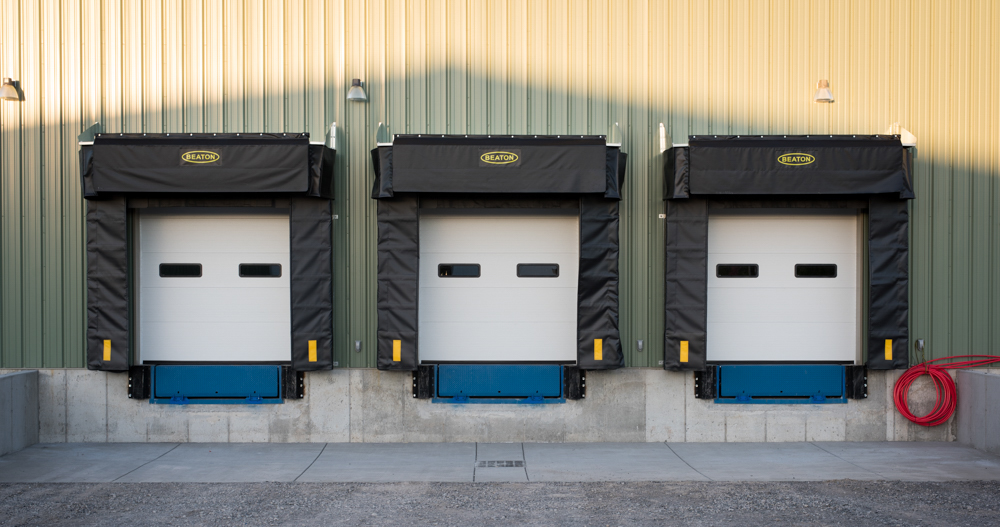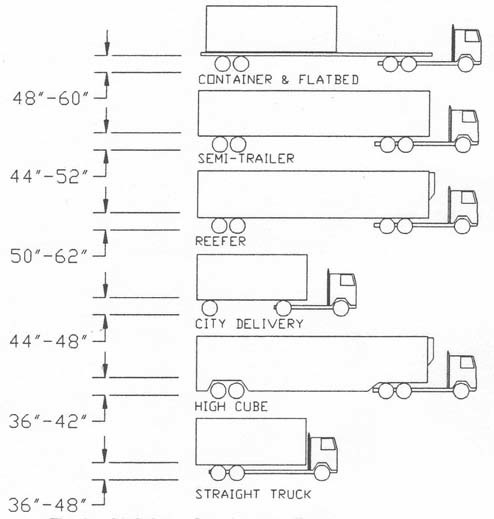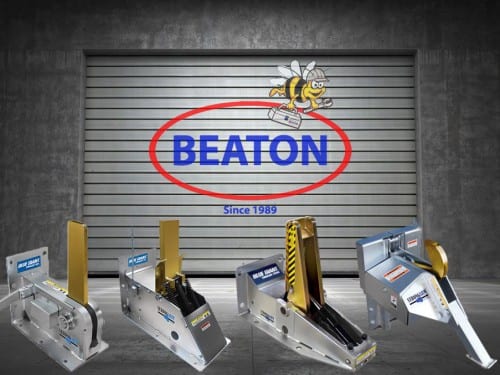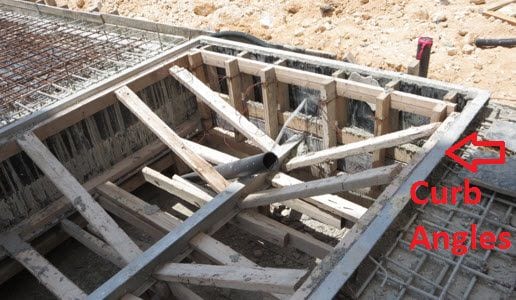This is our second education series for Loading Dock Design. To visit the first module please click here for Loading Dock Design and Planning – Series 1.
Dock Type
 Flush Dock Design
Flush Dock Design
Flush docks are in most common use today. Here the face of the dock (foundation) is flush with the outside wall of the building. To prevent wall damage and protect dock seals (if used) on a level approach it is recommended that the foundation/dock bumper extend 4″ beyond the outside wall.
NOTE: If building wall projects beyond the dock face additional foundation/bumper projection is required.
Enclosed Dock
Enclosed docks are generally used when climate control, product protection, security, and overhead lift capabilities are required.
They are not a common choice due to high construction costs and vehicle exhaust pollution considerations.
Open Dock
Open docks, although they may be a necessary alternative in some cases, are not generally recommended because of their weather exposure and susceptibility to pilferage. In all cases these docks should be provided with a canopy. And in situations where canopies are planned over docks on sloped grades, the height of the canopy must be calculated to accommodate the height of the sloped trailer.
Depressed Dock – a.k.a. Declined Approach
Depressed docks with slope driveways are used where building construction eliminates basements and dock level floors. Caution must be exercised in planning the grade of the driveway. It should not exceed 10% in order that the top of the truck will not hit the wall of the building, cargo topple, or that pull-away traction problems result in ice or snow conditions.
Saw Tooth Dock
Saw tooth docks present a design solution to situations where apron space is limited, however they reduce useable dock space.
Need More Information?
Visit the Architects Corner at the Blue Giant Website
At Beaton Industrial, Inc. we put safety first. Un-safe work practices will not be tolerated in today’s workplace. Loading dock designers must ensure that the loading dock area is not just efficient, but also safe. Installing loading dock safety equipment is just the first step towards diminishing hazardous and expensive accidents. The loading dock workforce must then be educated and trained on how to utilize the equipment and identify the warning signals. If a person does not entirely understand a particular piece of equipment they are unlikely to use it appropriately. It is the employer’s responsibility to ensure that proper training is provided for the loading dock workers. Our authorized representatives can provide employers with after-installation training to ensure proper equipment use.
Future requirements should always be addressed throughout the planning process. Prior to construction of a new building, to save a great deal of expenditure and frustration later down the line. Beaton Industrial will incorporate into the layout, any future need for more door openings and storage capability.
Located in Utica, New York – Beaton Industrial is the northeast leader in Loading Dock Seal & Shelter design, sales and installation. Our dock seal representative’s are located throughout Upstate, Central, and Northern New York including Utica, Syracuse, Albany, Watertown, Binghamton, Plattsburgh, and Poughkeepsie.
If you would like to schedule an appointment to have one of our Loading Dock Planning and Design specialists visit your facility for a free loading dock application survey, please contact us today!




